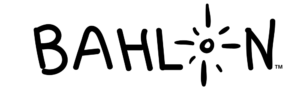Table of Contents
ToggleIntroduction
Embarking on a wellness journey may seem daunting for beginners, but it doesn’t have to be. Setting achievable wellness goals is a crucial initial step. Wellness isn’t just about physical health; it encompasses a holistic approach that includes mental, emotional, and spiritual well-being. As a beginner, it’s important to understand that wellness is a personal journey. What works for one person may not necessarily work for you. This article aims to guide beginners on where to start with their wellness goals, providing practical tips and strategies to set them on the path to balanced living.

What is Wellness?
Wellness is a multifaceted concept that goes beyond mere physical health, illness, or treatments. It’s a broader idea that encompasses physical, mental, and spiritual well-being. It includes everything from diet, exercise, sleep habits, stress management, and emotional health, to your relationships, social interactions, and sense of purpose in life.
Wellness is about actively pursuing a state of being healthy in body, mind, and spirit. It’s about recognizing that each of these areas in our lives is interconnected and that we must strive for balance among them for overall well-being. The World Health Organization defines wellness as “…a state of complete physical, mental, and social well-being, and not merely the absence of disease or infirmity.”
Importance of Wellness
The importance of wellness cannot be overstated. Wellness is more than just being free from illness; it’s a dynamic process of change and growth, a state of complete physical, mental, and social well-being. There is an undeniable link between wellness and quality of life. When we maintain a balanced life that includes a nutritious diet, regular physical activity, stress management, and strong social connections, we pave the way for improved overall health.
Wellness can also significantly impact our productivity and, consequently, our success in various areas of life. A healthy person is more likely to perform better at work, engage in meaningful relationships, and enjoy life to its fullest. Furthermore, adopting a wellness-oriented lifestyle not only increases the length of life but also improves its quality, helping us to stay active and independent as we age. Thus, wellness is a worthwhile investment, whose dividends are improved health, happiness, and longevity.
Setting a Wellness Vision
A Wellness Vision is a compelling vision of our future well-being and health, providing direction and helping us set priorities toward achieving overall wellness. Essentially, a Wellness Vision is where we imagine ourselves in the future when our health is optimal. It encompasses our physical health, mental and emotional well-being, and even our spiritual wellness.
Creating a Wellness Vision involves introspection and honest self-assessment. It requires us to identify our health strengths and weaknesses, our lifestyle habits, and our personal health goals. Furthermore, it necessitates acknowledgment of our intrinsic motivations and the identification of potential barriers that may hinder our path to wellness.
Crafting a Wellness Vision can be a transformative exercise, illuminating the path towards a healthier, more balanced life. It can be a beacon guiding us when we face health challenges or when we feel lost in our wellness journey. Remember, your Wellness Vision is a dynamic tool – as you grow and change, so should your vision. Periodically revisit and revise your Wellness Vision to reflect your evolving health and wellness goals and ambitions.
Creating SMART Wellness Goals
In our wellness journey, setting SMART wellness goals can provide structure and guidance. SMART is an acronym that stands for Specific, Measurable, Achievable, Relevant, and Time-bound. Each of these factors plays a crucial role in ensuring our wellness goals are clear, realistic, and manageable.
Specific
Define your goals with as much detail as possible. Rather than saying “I want to be healthier,” say “I will take a 30-minute walk three times a week.”
Measurable
Your goals should have quantifiable outcomes. Instead of saying “I’ll eat less junk food,” say “I’ll limit myself to one junk food meal per week.”
Achievable
Ensure your goals are attainable and realistic. It’s better to set a target you can hit than one that’s out of reach. Set yourself up for success.
Relevant
Your goals should align with your overall Wellness Vision and be relevant to your life. There’s little point in setting a goal that doesn’t help you progress towards your vision.
Time-bound
Each goal should have a deadline. This promotes accountability and gives you a timeframe for achieving your goal.
Nutrition for Beginners
Understanding nutrition is a fundamental step towards maintaining a healthy lifestyle. As a beginner, it can seem overwhelming, but with the right information, you can start making healthier food choices.
Firstly, balance is key. No single food contains all the nutrients our bodies need, so it’s important to eat a variety of foods from different food groups. These comprise fruits and vegetables, whole grains, proteins, and dairy. It’s also essential to control portion sizes to ensure you’re not overeating or undereating.
Secondly, limit the intake of processed foods, sugars, and unhealthy fats. These can lead to weight gain, heart disease, and other health issues. Opt for whole foods that are rich in nutrients and fiber.
Lastly, remember to hydrate. Water plays a crucial role in many bodily functions, including digestion and temperature regulation. Aim to drink at least eight glasses of water per day.
Embrace these beginner nutrition tips as part of your wellness journey. As you become more comfortable with these concepts, you can delve deeper into more complex aspects of nutrition. Always remember, the journey to better nutrition is a marathon, not a sprint.
Integrating Exercise into Daily Routine
Incorporating regular exercise into your daily routine is an integral part of maintaining a healthy lifestyle alongside proper nutrition. Here’s how you can easily integrate physical activity into your day-to-day life.
Firstly, always aim for consistency over intensity. It’s better to engage in moderate exercise regularly than to exert yourself to the extreme sporadically. Start with short bouts of exercise, maybe 15–20 minutes a day, and gradually increase the duration as your fitness level improves.
Secondly, find activities that you enjoy. Exercise should not be a chore, but a fun part of your day. This could be anything from dancing to your favorite music, cycling, swimming, or even brisk walking in a nearby park.
Thirdly, make use of any opportunity to be active. Take the stairs instead of the elevator, park your car a little further from your destination to walk the extra distance, or consider a standing desk to avoid prolonged sitting at work.
Lastly, consider incorporating strength training exercises into your routine. These can help improve muscle strength, enhance metabolic rate, and promote weight management. Always remember, the key to the successful integration of exercise into your routine is to make it a sustainable and enjoyable part of your lifestyle.
Tracking Progress and Adjusting Goals
Monitoring your progress is as essential as setting your fitness goals. It provides a reality check, motivates you by showing how far you’ve come, and helps you make necessary adjustments to your strategy.
To track your progress, you may consider keeping a fitness journal detailing your daily exercise routines, duration, intensity, and how you felt during and after the exercise. There are also numerous fitness apps available that can efficiently record this data for you.

Measuring your progress shouldn’t be solely about checking your weight. Consider other parameters – improvements in your strength, endurance, flexibility, and how well you feel overall.
Remember, progress is not always linear. There may be times when you plateau or even regress. It’s important not to be disheartened by these phases. Instead, use them as an opportunity to reassess your goals. Maybe you need to switch up your routine, try a new exercise, or adjust your nutrition plan.
Adjusting your wellness goals doesn’t mean you’ve failed. It’s a sign that you’re evolving, learning what works best for you, and taking strides toward a healthier, fitter you. Stay patient and persistent, and your consistency will pay off.
FAQs
What is a good starting point for beginners in wellness?
For beginners, it’s important to start by assessing their current lifestyle habits and identifying areas that could use improvement. This could include aspects like diet, exercise, sleep, and stress management. Once these areas are identified, setting realistic wellness goals and making gradual progress toward them becomes much more achievable.
How do I create a wellness goal?
To ensure the effectiveness of a wellness goal, it should adhere to the SMART principle – Specific, Measurable, Achievable, Relevant, and Time-bound. For instance, rather than setting a vague objective such as “lose weight,” a SMART goal would be to “shed 5 pounds within 2 months by engaging in 30-minute exercise sessions, 5 days a week.” This approach promotes clarity, accountability, and a higher likelihood of success.
How important is it to track progress?
Monitoring progress is paramount as it provides insights into whether you’re on the correct trajectory to accomplish your objectives. It acts as a source of motivation and enables you to make necessary adjustments to your strategies if required.
Conclusion
The starting point for beginners in wellness lies in understanding their current habits, identifying areas of improvement, and setting SMART wellness goals that are customized to their unique needs and capabilities. It’s essential to remember that wellness is a journey, not a destination. It involves continuous learning, adjustments, and growth. Progress tracking plays a pivotal role in this journey, offering motivation and guidance along the way. Embarking on the path to wellness may seem daunting at first, but with patience, persistence, and a well-structured plan, it’s attainable.




















